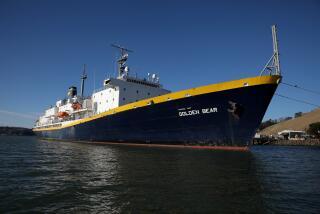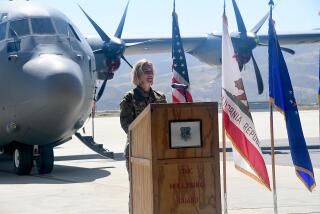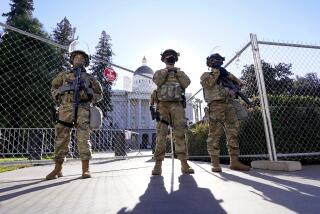Grumman Reps ‘Virtually Ran’ Miramar Procurement
- Share via
A former Miramar Naval Air Station worker credited with helping expose Navy supply irregularities involving Grumman Corp. said Tuesday that Grumman representatives “virtually ran” the procurement of aircraft parts at Miramar while bullying purchasing department employees.
Helen Roberson, who quit her purchasing department job at Miramar in 1983 after six years, said that, when she was there, about 15 Grumman employees worked full time at the base and had complete access to the supply system. She said that they dictated when and how many parts would be ordered from their company.
“They would decide what was required and they themselves would request that the order be typed up and they would walk it through to purchasing and have purchasing stop what it was doing to process the order,” said Roberson, 59. “Grumman--not the Navy--would decide what was required. I would say that they (Grumman) virtually ran Miramar.”
Spokesmen for both the Navy and Grumman described Roberson’s observations as “ludicrous.”
“Our people are there to provide technical expertise and to assist the Navy, but they do not direct the Navy’s supply program,” said Michael Drake, a Grumman spokesman at the company’s headquarters in Long Island, N.Y. “It may be a matter of her (Roberson’s) perception. Certainly, our people know what they’re doing and, hopefully, they’re there to be very helpful to the Navy.”
Drake said that as many as 100 Grumman employees work at Miramar at any given time, depending on the number of Grumman-manufactured F-14 Tomcat fighters and E-2C Hawkeye radar planes at the air station.
“Other contractors do the same thing at other bases,” observed Lt. Cmdr. Tom Jurkowsky, a Navy spokesman in San Diego. “Their representatives, like Grumman’s, are there to advise and facilitate various issues and problems with their respective products.”
Last week the Pentagon relieved Miramar’s commander, its supply officer and a rear admiral of their duties after it was disclosed that the base had paid $1,800 for two Grumman-built aircraft ashtrays designed for the E-2C. Officials at Miramar also paid Grumman $800 for two wrench sockets and $2,710 for a lock that prevents a Tomcat’s horizontal stabilizer from moving during ground maintenance.
Rep. Jim Bates (D-San Diego), who is independently investigating procurement activities at Miramar, charged Monday that pertinent documents kept in the air station’s purchasing department have disappeared since the ashtray controversy was made public in May. Bates said the missing documents may be evidence of a “form of collusion” between Grumman and the Navy.
His investigation of Miramar’s purchasing department began in 1983, after Roberson approached Bates alleging widespread improprieties. Roberson said her supervisors at the base as well as the Naval Investigative Service took no action before she contacted Bates.
The Navy has since initiated two probes related to the controversy.
Roberson said Tuesday that on one occasion while working at Miramar, she processed a Grumman-initiated request for replacement “airplane fasteners.”
“I looked in the technical books and found out that these things--whatever they were--ran $2.30 each,” Roberson said. “But Grumman charged us $5 or $6 apiece. I remember that the whole order came to something like $7,000.”
Roberson said that in June or July, 1983, she had an altercation with a Grumman representative whom she did not identify. Roberson said that the representative “pointed a finger in my face” when she challenged a spare-parts request that he had prepared.
“He shook his finger at me and told me he was getting sick of me threatening his authority,” Roberson said. “I would say that they have a hell of a lot of authority.”
More to Read
Inside the business of entertainment
The Wide Shot brings you news, analysis and insights on everything from streaming wars to production — and what it all means for the future.
You may occasionally receive promotional content from the Los Angeles Times.










